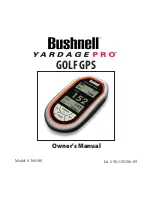
Heading Reporting Threshold (HEAD)
The objective of this feature is to provide a vehicle trace which closely follows the actual route,
but with the minimum of position update reports. In broad terms, the system provides fewer
updates whilst driving in a straight line (e.g. motorways), but increases the number of updates
whilst negotiating corners (e.g. city/town driving). Heading based reporting can be disabled, by
setting HEAD to zero.
Stationary Timed Message Interval (STIM)
This parameter defines the maximum time interval between position update reports whilst
stationary. The appropriate value for Stationary Timed Interval will depend on the user
application. A typical value is 60 minutes. Setting the Stationary Timed Message Interval to
zero will disable time based reports whilst stationary.
Journey Timed Message Interval (JTIM)
This parameter defines the maximum time interval between position update reports whilst in a
journey. The journey mode is dictated by the IGNM setting, as below:
<IGNM>
Journey Detection Method
0
GPS speed
1
Digital input 1
2
Digital input 1
3
External Voltage
4
From CANBus data
The appropriate value for Journey Timed Interval will depend on the user application. The
default setting for JTIM is 2 minutes. Setting the Journey Timed Message Interval to zero will
disable time based journey reports.
Journey Timed Message Interval (JSEC)
The journey timed reporting interval may be entered in seconds using the JSEC command.
Idle Mode Timed Message Interval (ITIM)
This parameter defines the maximum time interval between position update reports when a
vehicle is idling. Idling mode is initiated after a period of stationary time (see IDLE parameter)
whilst the ignition is on. Setting the Idle Mode Timed Message Interval to zero will disable time
based idle mode journey reports.
Idle Mode Threshold (IDLE)
A vehicle is defined as being in Idle Mode when a vehicle is stationary for a specific length of time
whilst the ignition is on. Idle Mode ends once the vehicle starts moving again. This parameter
defines the length of time (in seconds) that a vehicle must be stationary before Idle Mode is
initiated. Note that Idle mode start reports, timed reports and end reports are sent to the host
application, hence an excessively low value for IDLE can result in increased reporting. The
default value for IDLE is 180 seconds.
Over-speed Speed Threshold (OSST)
The AT240 can be configured to report over-speed events, which are defined as exceeding a
given speed for a given amount of time. The OSST parameter defines the over-speed threshold
in kmh. In order to trigger an over-speed event, the vehicle must travel in excess of OSST kmh
for a period of OSHT seconds (see below). Further over-speed events cannot be triggered until
OSIT seconds have elapsed and vehicle speed has fallen below the OSST threshold. A value of
zero for OSST will disable over-speed events/reports.
Over-speed Hold Time (OSHT)
Defines the period of time (in seconds) that a vehicle must exceed OSST kmh to trigger an over-
speed event.
Over-speed Inhibit Time (OSIT)
Defines the minimum time between over-speed events. Once an over-speed event has occurred,
further over-speed events cannot be triggered until OSIT seconds have elapsed.












































